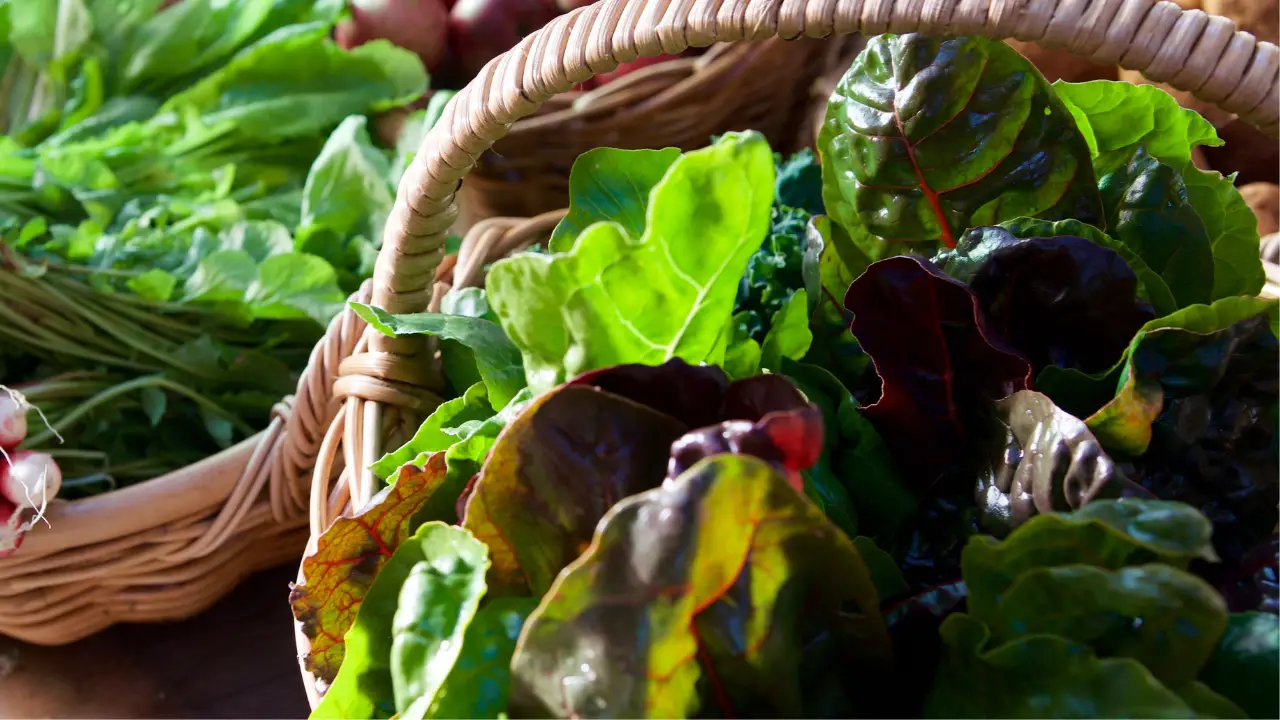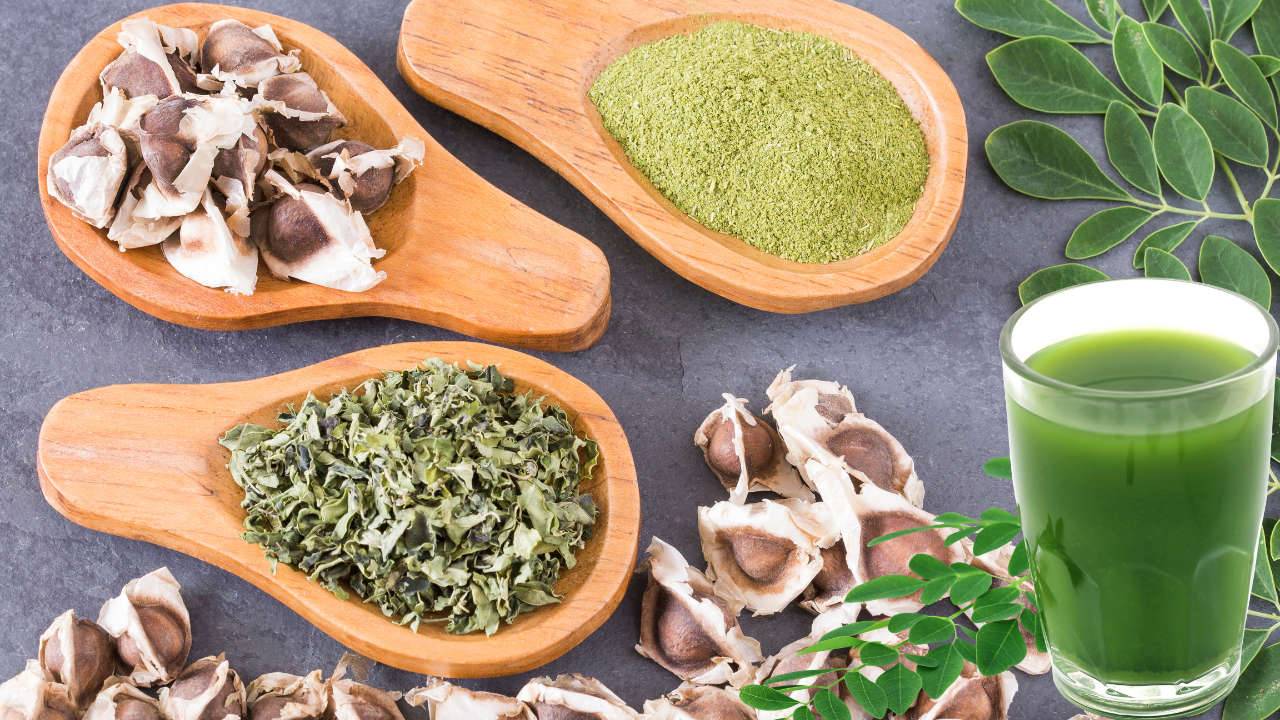Indian Leafy Vegetables – Green leafy vegetables names in India
Jump To:

Leafy vegetables are known to be the most inexpensive source of several vital nutrients like vitamins A, C, and K and minerals like calcium, iron, magnesium, and potassium, nature’s ‘multivitamins,’ leafy vegetables are abundant with nutrition and represent an excellent component of one’s usual diet. They are also a rich source of fiber and phytochemicals such as lutein, zeaxanthin, beta-carotene, and chlorophyll that can revitalize your health. Let’s get into the must-have local and seasonal edible Indian leafy vegetables. Also, don’t forget to check out the benefits of eating seasonal foods, seasonal food benefits.
The Indian leafy vegetables are stark green in color due to the abundance of chlorophyll (a pigment that gives plants their green color). It’s interesting to know that chlorophyll’s molecular structure is similar to that of hemoglobin, which is a critical part of human blood. The only exception is their central atom (iron for hemoglobin and magnesium for chlorophyll), making greens a natural blood-building food.
Leafy Vegetables Benefits:
Also, leafy greens are grown in a healthy way, are a great addition to one’s diet, and offer countless health benefits like the following:
- Ideal for weight management.
- Improve vision and nervous control.
- Maintain blood pH.
- Support heart and liver health.
- It helps in maintaining blood pressure and blood glucose levels.
- Good for dental and bone health.
- Purify the blood and increases hemoglobin.
- Fights cancer
- Boosts immunity.
- Prevent macular degeneration and delay aging.
Leafy Vegetable List:
Unknown Facts Of Indian Greens – India’s diverse geography and climate have a range of its vegetation which includes an assortment of edible greens, not only the commonly known fenugreek, spinach, and mustard greens but also a variety of other greens.
Here are some little-known facts about local and seasonal edible greens grown across the country:
1. Amaranth Leaves (Rajgira Leaves):
It comes in a few varieties ranging from purple and red to green in color, from the foothills of the Himalayas to the coasts of south India. These greens are an incredible source of vitamin K and an excellent source of calcium, magnesium, potassium, vitamin C, vitamin B6, folate, and vitamin A.
2. Moringa Greens (Saijan Patta):

Moringa can thrive in most tropical and subtropical rain. It can be consumed – the leaves and pods as food and the seeds, bark, flowers, and roots as medicine. The leaves are especially highly nutritious and an excellent source of vitamin K and vitamin C. It is also a good source of calcium, magnesium, vitamin B2, and B-carotene along with protein. With all the nutrition richness moringa can combat malnutrition, a study says.
3. Sorrel (Gongura Leaves):
These leaves are sour in taste but provide an array of nutrients ranging from vitamins, minerals, organic nutrients, oxalic acid, proteins, and fiber. Thus, these properties make these leaves not only suitable as food but as medicine as well. The prime health and medicinal benefits include cancer treatment, curing hypertension, and reduction of inflammation.
4. Sushni Saag:
This green leafy vegetable is widely used in different traditional and folk medicinal systems for its curative value. It is consumed in West Bengal, Odisha, Chhattisgarh, Bihar, and Jharkhand and is recommended for the treatment of insomnia, hypertension, diarrhea, respiratory diseases, and skin diseases.
5. Chakramarda Saag (Cassia Tora):
This plant grows wild like a weed, spreading itself like a lush carpet in the forest areas of Bihar, Jharkhand, Chhattisgarh, and in the coastal belt of Karnataka and Goa. The leaves are very rich in iron and micronutrients like zinc. It is also an excellent toxin remover and aids in the treatment of malaria, skin inflammation, and other dermal diseases such as ringworm.
6. Bichu Buti (Sisunaak Saag):
This is a perennial plant that grows wild throughout the Himalayan region of India, rich in natural fibers. This super-nutritious plant has been traditionally used as a natural diuretic, laxative, and allergy-relief remedy. It is also proven to benefit skin, bone, and urinary health as well.
7. Kulfa Saag (Pigweed):
This is a summer vegetable and apart from providing significant amounts of vitamins A, B, and C, potent antioxidants, and decent amounts of protein, this leafy green vegetable probably contains more omega-3 fatty acids than any other commonly available vegetable source.
8. Pui Saag:
This plant is very low in calories and rich in nutrients like vitamins A and C, iron, folate, potassium, calcium, magnesium, copper, fiber, and antioxidants such as B-carotene, lutein, and zeaxanthin. Together, these compounds help act as protective scavengers against oxygen-derived free radicals.
9. Anne Soppu (Water Spinach):
These greens are found in tropical and subtropical regions. Though they are mild, they possess a distinct savory taste. They are an abundant source of protein and also have abundant quantities of water, iron, vitamin C, vitamin A, and other nutrients, making it an extremely satisfying culinary ingredient that can be eaten cooked or raw.
10. Gotu Kola:
This is a versatile medicinal plant that has been traditionally used in India for centuries, it is rich in iron and dietary fiber with many health benefits right from healing wounds and treating varicose veins to easing anxiety and enhancing memory power.
